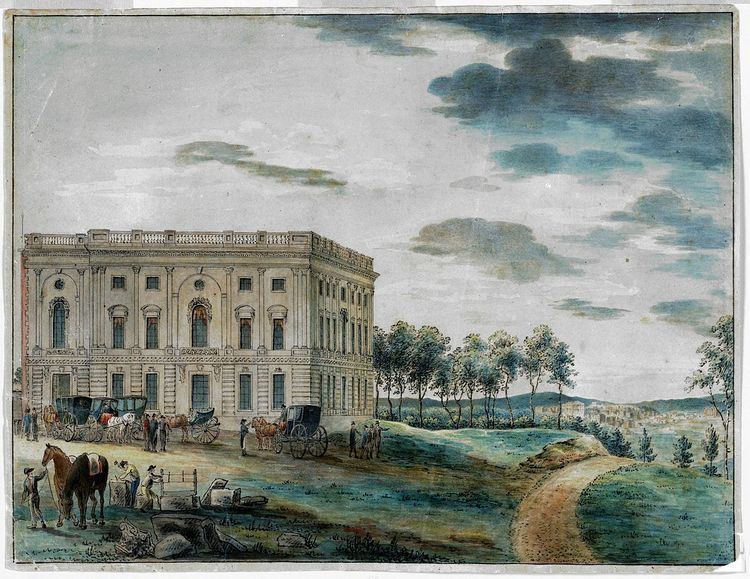House Majority Federalist | ||
 | ||
Members 32 Senators106 Representatives1 Non-voting members | ||
The Sixth United States Congress was a meeting of the legislative branch of the United States federal government, consisting of the United States Senate and the United States House of Representatives. It met at Congress Hall in Philadelphia, Pennsylvania and in Washington, D.C. from March 4, 1799, to March 4, 1801, during the last two years of John Adams's presidency. It was the last Congress of the 18th century and the first to convene in the 19th. The apportionment of seats in House of Representatives was based on the First Census of the United States in 1790. Both chambers had a Federalist majority. This was the last Congress in which the Federalist Party controlled the presidency or either chamber of Congress.
Contents
Major events
Major legislation
States admitted and territories organized
Party summary
The count below identifies party affiliations at the beginning of the first session of this Congress, and includes members from vacancies and newly admitted states, when they were first seated. Changes resulting from subsequent replacements are shown below in the "Changes in membership" section.
Senate
House of Representatives
Members
This list is arranged by chamber, then by state. Senators are listed in order of seniority, and Representatives are listed by district.
Skip to House of Representatives, belowSenate
Senators were elected by the state legislatures every two years, with one-third beginning new six-year terms with each Congress. Preceding the names in the list below are Senate class numbers, which indicate the cycle of their election. In this Congress, Class 1 meant their term began in the last Congress, requiring reelection in 1802; Class 2 meant their term began in this Congress, requiring reelection in 1804; and Class 3 meant their term ended with this Congress, requiring reelection in 1800.
House of Representatives
The names of members of the House of Representatives elected statewide on the general ticket or otherwise at-large, are preceded by an "At-large," and the names of those elected from districts, whether plural or single member, are preceded by their district numbers.
Changes in membership
The count below reflects changes from the beginning of the first session of this Congress
Senate
There were 7 resignations and 1 vacancy at the beginning of Congress. The Federalists had a 1-seat net loss and the Democratic-Republicans had a 2-seat net gain.
House of Representatives
There were 6 resignations and 3 deaths. The Federalists had a 4-seat net loss and the Democratic-Republicans had a 3-seat net gain.
Committees
Lists of committees and their party leaders.
